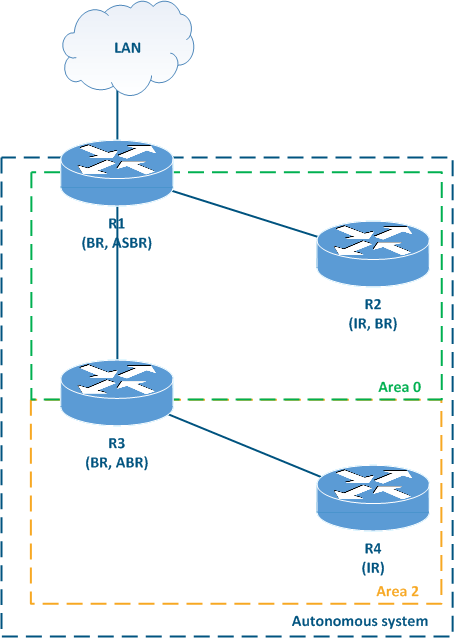...
| Center |
|---|
Figure 2 - Network scheme with different router types |
OSPF's operation
...
The OSPF's operation has follows the following below steps. Some steps will require a detailed explanation which is provided in the sections below.
- Step 1: OSPF protocol launchlaunching. The device defines configuration of the devices includes a list of interfaces that will participate in the OSPF's protocol operation , and areas associated with the area identifiers to which these interfaces are connected. Upon this configuration, OSPF is launched.
- Step 2: Setting up neighborhood neighboring relations. The device make makes an attempt to find other routers and establish neighborhood neighboring relations via using the list of interfaces list defined in step 1.
- Step 3: Roles Role distribution. To reduce a the service traffic volume in the broadcast network segments, a designated router (DR) is selected, which is the central point of a for routing information exchange in inside the broadcast segment.
- Step 4: Link state database (LSDB) synchronization. OSPF requires each router to have the same set of routing information, which supposes synchronization of the link state database.
- Step 5: Building the shortest paths tree (SPT). Dijkstra's algorithm is applied to the routing information obtained in step 4 to build a shortest paths tree. The root of the tree is the device where the algorithm start, the branches are known destination networks, information about which is obtained from other routers. Thus, each device has a set of paths to each network, optimized by the metric criteria.
- Step 6: Routes export to FIB. The set of routes obtained in step 5 is stored in the RIB, so the device performs additional optimization by comparing Distance values for routing information obtained from different sources. The best routes obtained during the comparison are placed in the FIB and used to transfer user and service data.
- Step 7: Continuous monitoring of the network state. Dynamic routing protocols perform constant link state monitoring, because the routing table of all devices must be kept up to date.
...
